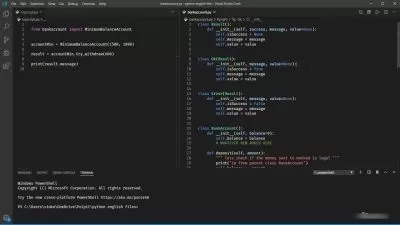Processing Copernicus Sentinel-2 data using Python
Gianluca Valentino
56:13
Description
Learn how to use Python to access the Copernicus Dataspace Ecosystem, and process and analyze Sentinel-2 imagery
What You'll Learn?
- Create a Copernicus Open Dataspace account
- Install and setup Anaconda for Python development
- Search, filter and download Copernicus Sentinel-2 data using the Python API
- Analyze and process Copernicus Sentinel-2 data
Who is this for?
What You Need to Know?
More details
DescriptionThe use of remote sensing data is growing, with the need to use such data for many applications ranging from the environment to agriculture, urban development, security and disaster management. This course is intended for beginners who would like to make their first acquaintance with remote sensing data, and learn how to use freely available tools such as Python to analyze and process freely available imagery from the Copernicus Sentinel-2 mission. No prerequisite knowledge is required.
Through a step-by-step learning process, this course starts off with setting up a Copernicus Dataspace Ecosystem account, and installing a Python environment. Python is then used to make use of the Copernicus Dataspace Ecosystem APIÂ to search for, filter and download Sentinel-2 products. Also using Python, these products are then opened and the corresponding optical and near-infrared bands are analyzed and processed to create and RGBÂ composite image, as well as calculate commonly used indices such as NDVIÂ and NDWI. Basic correction methods such as normalization and brightness correction are also introduced.
At the end of the course, a bonus application is presented, where a machine learning technique (clustering) is used to partition the content of the Sentinel-2 product into various categories to obtain an estimate for a land cover map.
Who this course is for:
- New remote sensing data users
- Experienced GIS software users who want to start using Python to process remote sensing data
- Existing Copernicus data users who want to learn how to use the new Data Space Ecosystem
The use of remote sensing data is growing, with the need to use such data for many applications ranging from the environment to agriculture, urban development, security and disaster management. This course is intended for beginners who would like to make their first acquaintance with remote sensing data, and learn how to use freely available tools such as Python to analyze and process freely available imagery from the Copernicus Sentinel-2 mission. No prerequisite knowledge is required.
Through a step-by-step learning process, this course starts off with setting up a Copernicus Dataspace Ecosystem account, and installing a Python environment. Python is then used to make use of the Copernicus Dataspace Ecosystem APIÂ to search for, filter and download Sentinel-2 products. Also using Python, these products are then opened and the corresponding optical and near-infrared bands are analyzed and processed to create and RGBÂ composite image, as well as calculate commonly used indices such as NDVIÂ and NDWI. Basic correction methods such as normalization and brightness correction are also introduced.
At the end of the course, a bonus application is presented, where a machine learning technique (clustering) is used to partition the content of the Sentinel-2 product into various categories to obtain an estimate for a land cover map.
Who this course is for:
- New remote sensing data users
- Experienced GIS software users who want to start using Python to process remote sensing data
- Existing Copernicus data users who want to learn how to use the new Data Space Ecosystem
User Reviews
Rating
Gianluca Valentino
Instructor's Courses
Udemy
View courses Udemy- language english
- Training sessions 15
- duration 56:13
- Release Date 2024/03/12










